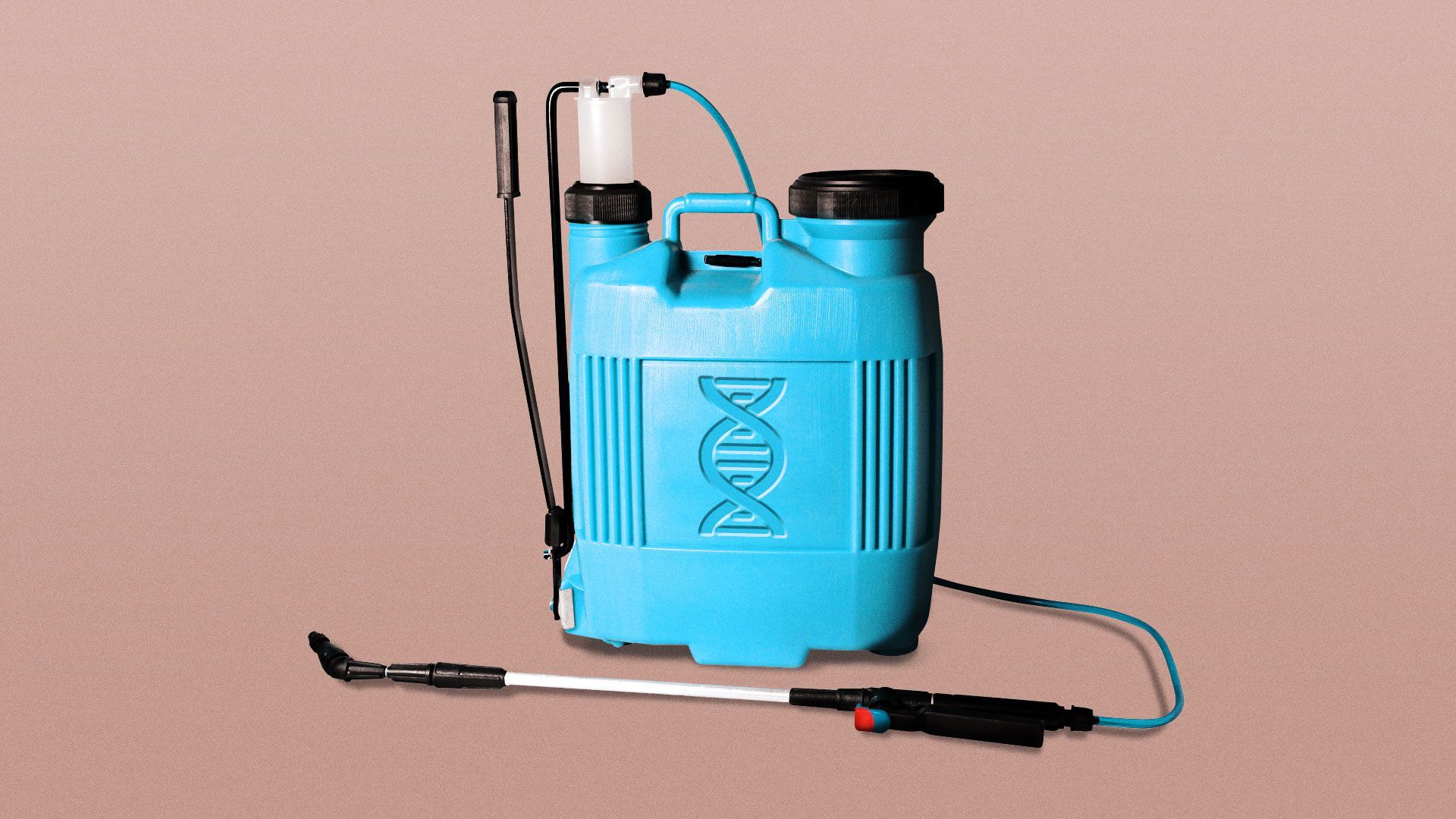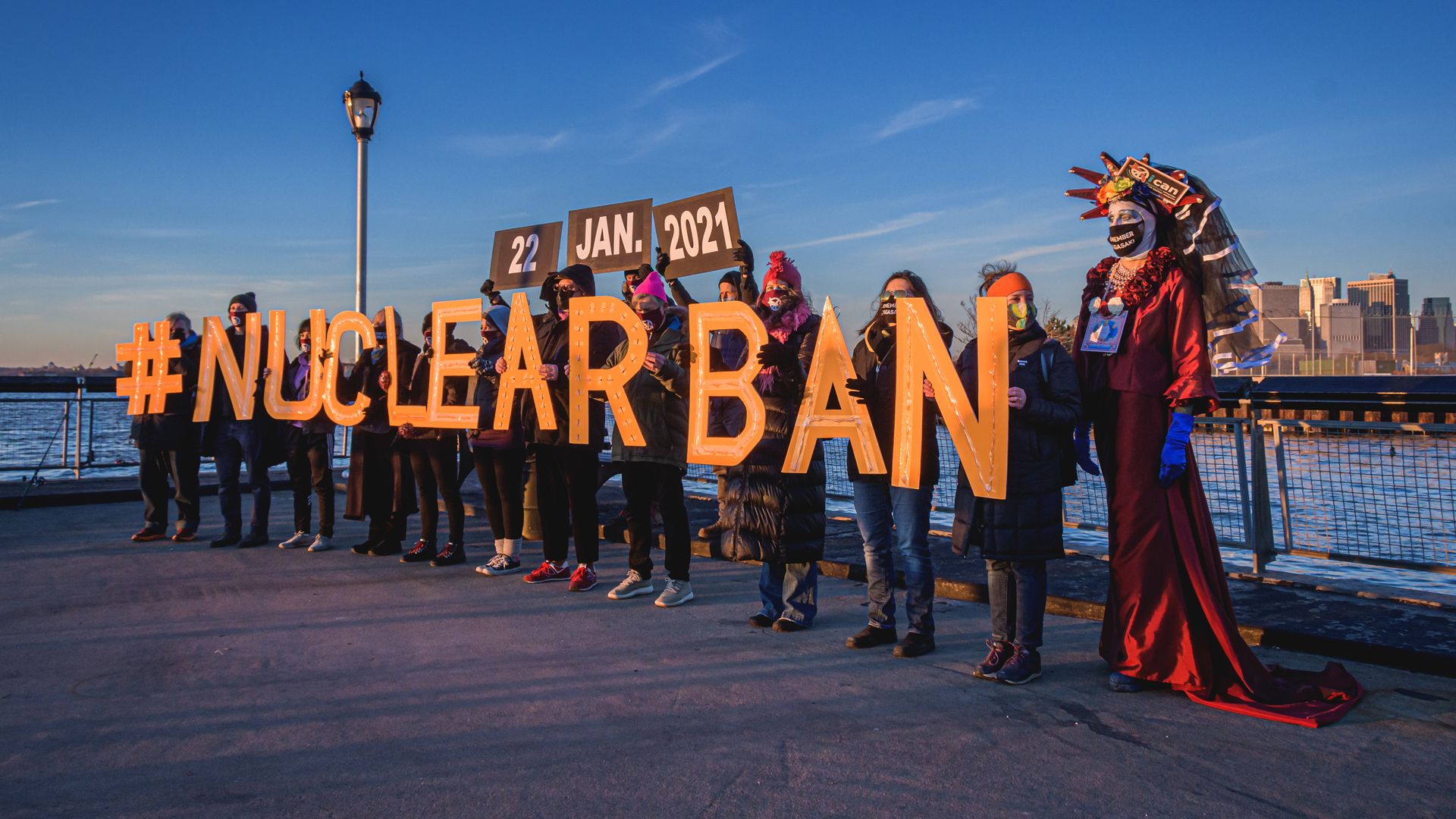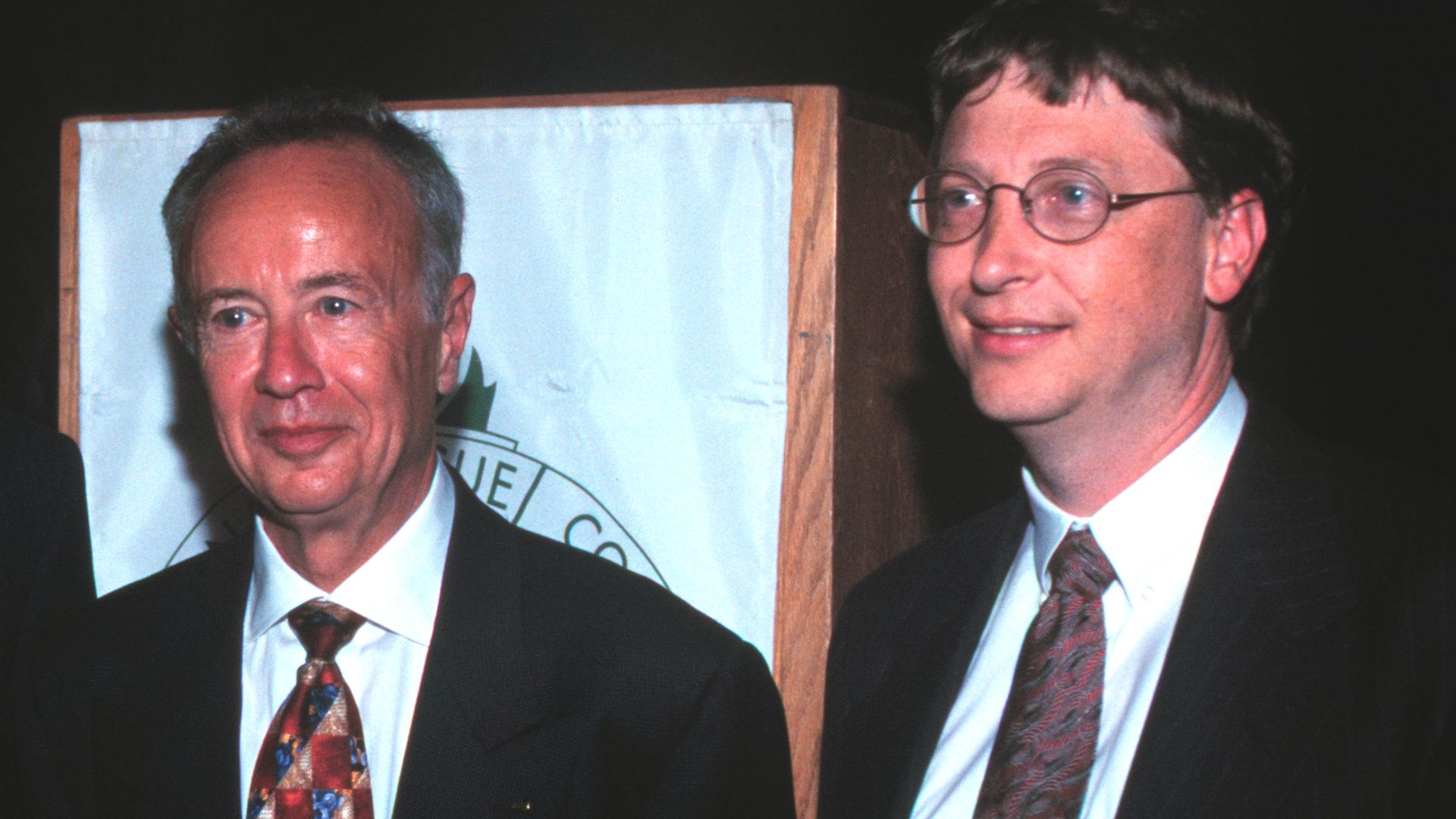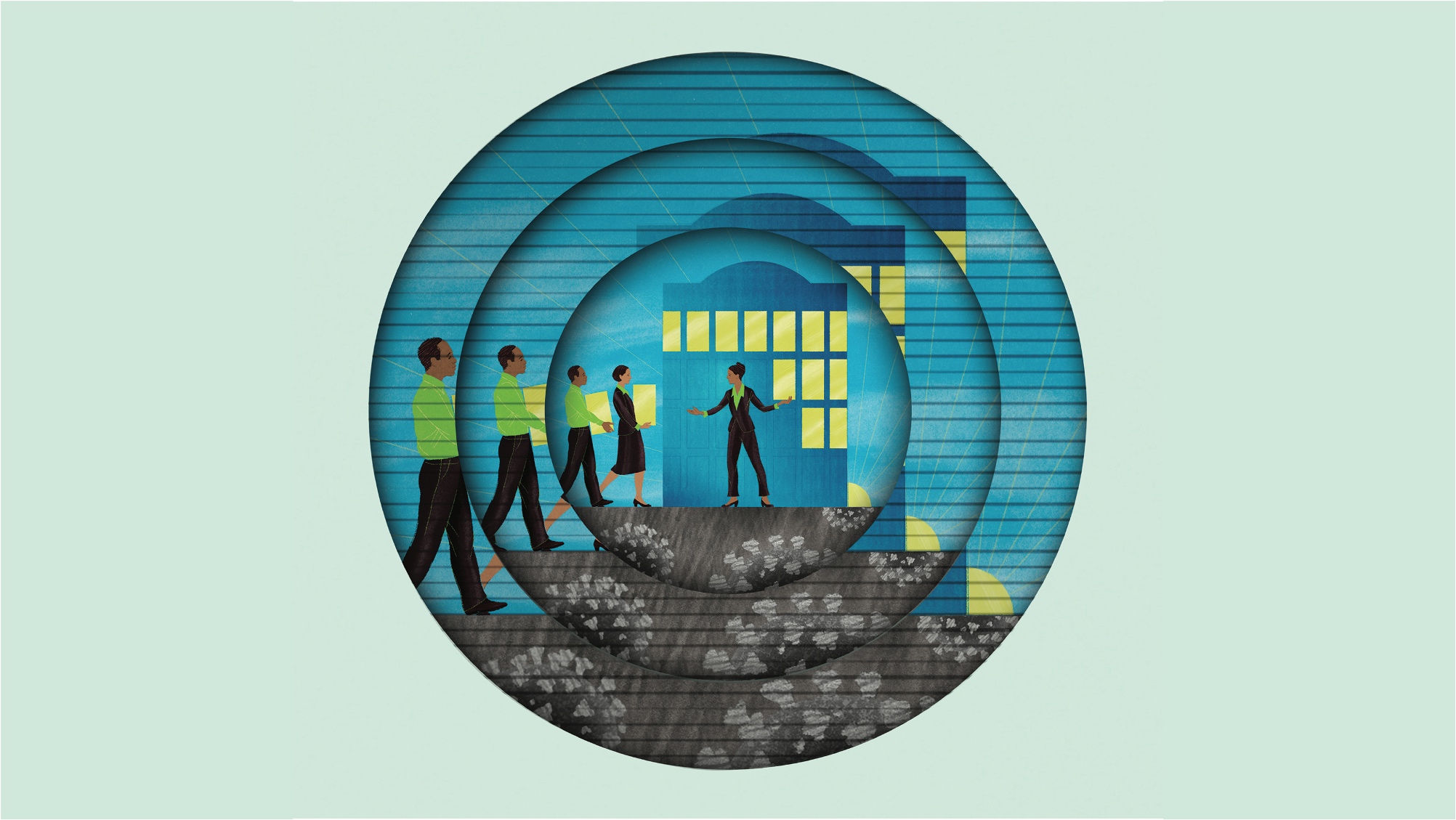| | | | | | | Presented By Deloitte | | | | Axios Future | | By Bryan Walsh ·Jan 23, 2021 | | Welcome to Axios Future, where we're about to finish season 5 of "Le Bureau" and welcome further recommendations within the genre of flinty French spy TV, s'il vous plaît. Today's Smart Brevity count: 1,911 words or about 7minutes. | | | | | | 1 big thing: Schools face an uphill battle to reopen during the pandemic |  | | | Illustration: Aïda Amer/Axios | | | | President Biden's plan to accelerate the reopening of K-8 schools faces major challenges from a still out-of-control pandemic and more contagious coronavirus variants. Why it matters: The longer American kids miss in-person schooling, the further they fall behind. But the uncertain state of the science on the role young children play in the pandemic continues to complicate efforts to reopen schools. Driving the news: On Thursday, Biden signed an executive order laying out his administration's response to COVID-19, which builds on a proposed coronavirus relief package that would include $130 billion in additional aid for K-12 schools. - That money can be used to improve ventilation, reduce the size of in-person classes to emphasize social distancing, and purchase more personal protective equipment.
By the numbers: In his inaugural address, Biden said "we can teach our children in safe schools." But with the country still recording nearly 200,000 new COVID-19 cases a day, we're still a long way from that goal. Details: The state of the science around the safety of opening schools during the pandemic remains in flux. - Researchers have concluded that young children — while not invulnerable to the disease — are about half as likely to be as susceptible to COVID-19 infection as are adults.
- Researchers studied nearly 100,000 students and staff at dozens of schools in North Carolina and found only 32 infections were recorded in school between reopening in August and the end of October.
- If schools in the area had the same level of transmission as the surrounding community during that time, researchers expected the students and staff — who wore masks and remained socially distant in the classroom — would have recorded 800–900 cases.
But, but, but: Other studies indicate transmission can and does happen in schools, especially as overall levels of the virus in the community rise. - Data from New York and Texas — two of the few states where decent information is available about possible classroom transmission — indicates that in recent months, teachers and other staff where school buildings are open have higher COVID-19 infection rates than the surrounding community.
The catch: Teachers in cities like New York where schools have partially opened are also being tested more frequently, which could help explain the apparent rise in infection rates. - And a report this month from Public Health England that relied on detailed contact tracing of about 20,000 people infected with the B.1.1.7 variant showed that children were no more likely to spread the new variant than the previous iteration of SARS-CoV-2.
Be smart: With the right social distancing and the right protective equipment, in-person schooling for young children — who also happen to be the group that struggles the most with remote education — should still be relatively safe. - But politics, even more than science, appears to be driving the decision to open or close schools.
- Schools in Republican-led states like Texas and Florida have been more likely to remain open over the past several months, even amid major outbreaks, whereas public schools in Chicago have remained shut since March, and teachers there are threatening a walkout over plans to partially reopen.
The bottom line: Whether schools open or close during the pandemic, someone will lose. Go deeper: The COVID-19 learning cliff |     | | | | | | 2. Jobs of the future turn green |  | | | Solar panel installers work in California. Photo: Mel Melcon/Los Angeles Times via Getty Images | | | | Even "jobs of the future" have been derailed by the intensified pandemic, but positions in environmental services are still growing strong. Why it matters: The economic carnage created by the coronavirus has curtailed job growth even in professions that seemed poised to expand in the future. As long as the pandemic remains out of control, the future of employment remains mostly on pause. By the numbers: The consulting company Cognizant's Jobs of the Future Index — which charts openings in employment sectors affected by the digital revolution — fell by 5.6% in the last quarter of 2020, and declined by 35.3% for all of 2020. - Even jobs in sectors that seem certain to grow in the future declined, with openings in algorithms, automation and AI falling 37% over the year as companies froze business investment.
What they're saying: "To a certain extent, the jobs of the future have been postponed," says Robert Brown, co-manager of Cognizant's Center for the Future of Work. The other side: One category that experienced continued growth in job openings even during the depth of the pandemic has been the environmental family. What to watch: Whether openings in high-tech sectors like AI begin to pick up again, which would be a sign that businesses are out of survival mode and ready to plan the future. The bottom line: Until we truly beat the pandemic, the future will be on hold. |     | | | | | | 3. Bioengineering more sustainable farming |  | | | Illustration: Eniola Odetunde/Axios | | | | A startup is using the tools of synthetic biology to reduce the pollution involved in large-scale agriculture. The big picture: We face two major challenges around farming: how to feed a still-growing global population, and how to do so without ruining the environment. Advances in synthetic biology could help us do both. How it works: Joyn Bio, a joint venture between synthetic biology leader Ginkgo Bioworks and life sciences giant Bayer, is experimenting with engineering microbes that could help replace the synthetic fertilizer and chemicals used in conventional farming. - The company is focusing first on developing custom microbes that could fix nitrogen in the soil to feed growing cereal crops like corn, what Joyn Bio CEO Michael Miille calls the "Holy Grail of agriculture."
Background: Plants need nitrogen to grow efficiently, but there's not enough naturally in soil to support the crops needed to feed a global population of nearly 8 billion people. Details: Joyn Bio identifies natural microbes in the soil that show promise in fixing nitrogen and then "engineers them to perform at an entirely different level," says Miille. - The company aims to engineer microbes that can fix nitrogen efficiently enough that synthetic fertilizer use could be cut by 30–50% without affecting crop yield.
- Miille says that currently, Joyn Bio's engineered microbes are efficient enough to reduce fertilizer use by 10% or so, though the company still needs to overcome regulatory hurdles and consumer acceptance before it could reach the marketplace.
"Agriculture needs innovation to be successful. The status quo is not going to get us there." — Michael Miille |     | | | | | | A message from Deloitte | | The value of resilient leadership | | |  | | | | Challenges for leaders won't end with a COVID-19 vaccine. The reason: Trust has fractured across government, business and other pillars of society – and this will continue after the pandemic. How leaders can invest in, rebuild and renew the trust of stakeholders within their institutions. | | | | | | 4. International nuclear weapons ban goes into force |  | | | Protesters celebrate the Treaty on the Prohibition of Nuclear Weapons in New York on Jan. 22. Photo: Erik McGregor/LightRocket via Getty Images | | | | A UN treaty outlawing the existence of nuclear weapons went into effect on Friday. Why it matters: The ban is chiefly symbolic, as neither the U.S. nor any other nuclear powers supported it. But moral statements should have meaning for weapons that, by their sheer indiscriminate power, are arguably immoral. Driving the news: The Treaty on the Prohibition of Nuclear Weapons was ratified by Honduras on Oct. 24, the 50th country to do so, triggering a 90-day period that ended with the treaty going into force on Jan. 22. - The treaty requires that all ratifying countries "never under any circumstances ... develop, test, produce, manufacture, otherwise acquire, possess or stockpile nuclear weapons or other nuclear explosive devices."
The catch: 86 member states have signed onto the treaty and more than 60 have ratified it, but because no states that actually have nuclear arsenals agreed to its terms, it won't immediately lead to any reduction in atomic arsenals. - Nuclear powers including the U.S. have argued that gradual multilateral disarmament is a better way to reduce the nuclear threat, while some security analysts worry the new pact could undercut the long-running Nuclear Non-Proliferation Treaty, which was meant to prevent the spread of nuclear weapons.
Yes, but: Advocates of the nuclear weapons ban point to the gradual erosion of multilateral nuclear arms control deals, including the expiration in 2019 of the Intermediate Nuclear-forces Treaty, which banned dangerous short-range missiles. - "The ban treaty rightly establishes abolition as the standard that all nations should be actively working to achieve, rather than an indeterminate future goal," former Defense Secretary William J. Perry wrote in the Bulletin of the Atomic Scientists.
Situational awareness: The Washington Post has reported that President Biden is seeking a five-year extension of the last remaining nuclear arms control treaty between the U.S. and Russia, which is set to expire in February. The bottom line: As long as more than 13,000 nuclear warheads remain in existence, they'll be an existential threat to all of us. |     | | | | | | 5. Worthy of your time | | How U.S. CDC missed chances to spot COVID's silent spread (Ned Parker and Chad Terhune — Reuters) - A jaw-dropping investigation into the many ways the CDC failed in the earliest stages of the pandemic, revealing problems that go well beyond political interference.
Scientists just took a step toward using living cells as hard drives (Emily Mullin — Future Human) - DNA could be the key to the world's growing data storage problem.
Superforecasting the end of COVID (Michael Story — UnHerd) - At this point, I've given up trying to predict the path of COVID-19, but a team of expert crowd forecasters remains undaunted — and they have hope for the spring.
Palantir's God's-Eye view of Afghanistan (Annie Jacobsen — Wired) - An excerpt from a new book on the Defense Department's controversial effort to create the world's most powerful biometric database.
|     | | | | | | 6. 1 throwback thing: Bill Gates and Andy Grove predict the future |  | | | Grove, left, and Gates in 1998. Photo: Tim Mosenfelder/Getty Images | | | | Back in 1996, two computer titans were asked to predict the future of tech — and they weren't too far off. The big picture: Predicting the future is easy, but being right is hard — and by that standard, Intel founder Andy Grove and Microsoft founder Bill Gates did fairly well. In a recent edition of his must-read newsletter on tech, Benedict Evans linked to a 1996 conversation in Fortune magazine between Grove and Gates that included both men's thoughts on where the then-nascent internet was headed. What they got right: The internet is going to be bigger than you can imagine. - "The internet is like a 20-foot tidal wave coming, and we are in kayaks," said Grove. "It's going to lift you and drop you" — which, I have to say, is a pretty accurate summation of every day I spend online.
- "A portable, put-it-in-your-pocket device [for the internet] could be very interesting," said Gates, at a moment when the iPhone was still 11 years away and less than a quarter of the American public was going online.
- "Within a few years you'll have to do something weird to get an analog TV signal," said Grove, hinting at a future of digital media. His timeline was early, but analog broadcasts ended in 2009.
- Gates looked forward to a new class of PCs that would combine a computer, a video game console, a VCR and a cable TV box. He wanted to call it Simply Interactive PCs, or SIPCs, but I do think Xbox ended up as a better name.
What they got less right: Bandwidth would be a serious limiting factor for a long time. - Both Gates and Grove envisioned a future where ever bigger and more powerful computers would be necessary to overcome the limitations of narrow internet bandwidth.
- The rise of the cloud and streaming media put the lie to that prediction.
The bottom line: The whole interview is worth a read, if only to hear about the time the two strong-willed CEOs got into a shouting match over salmon at Grove's house. |     | | | | | | A message from Deloitte | | How trust is influencing the return to the workplace | | |  | | | | Business leaders have been rethinking and changing their office spaces, but workers are still skeptical of returning. - Less than 32% believe they are highly likely to return when offices reopen.
Explore four reentry strategies organizations should consider to create an environment of trust. | | | | | | Axios thanks our partners for supporting our newsletters.
Sponsorship has no influence on editorial content. Axios, 3100 Clarendon Blvd, Suite 1300, Arlington VA 22201 | | | You received this email because you signed up for newsletters from Axios.
Change your preferences or unsubscribe here. | | | Was this email forwarded to you?
Sign up now to get Axios in your inbox. | | | | Follow Axios on social media:    | | | | | |








No comments:
Post a Comment